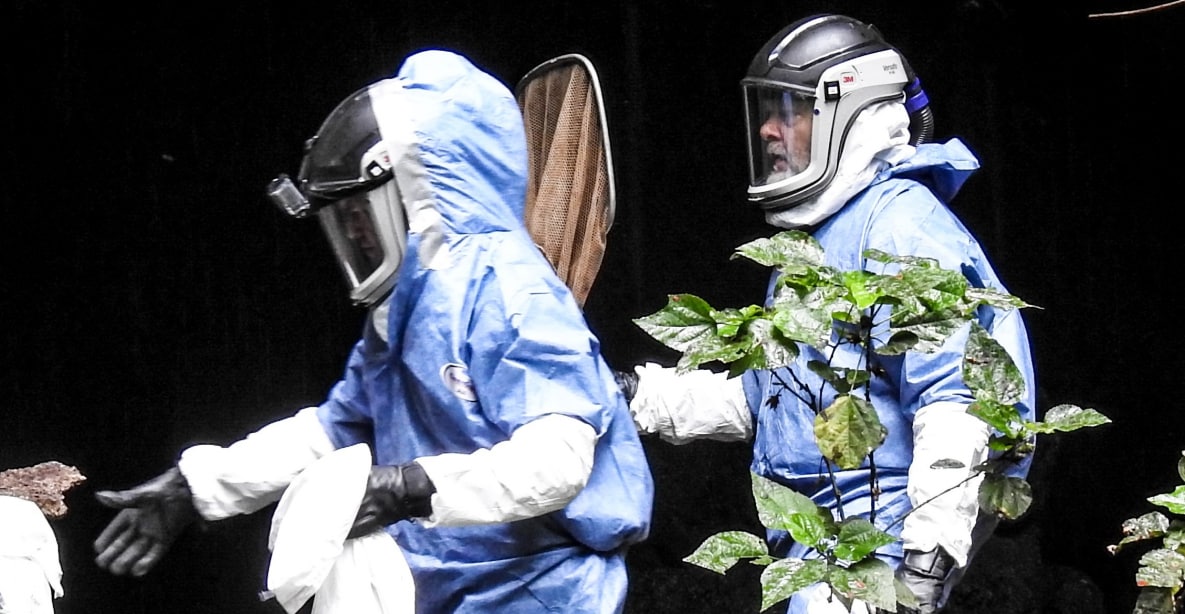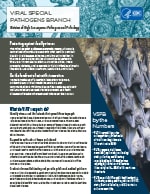Viral Special Pathogens Branch (VSPB)

Develop, evaluate and implement innovative and effective methods to prevent and control viral hemorrhagic fevers, in the US and abroad, based on cutting edge research.
One-third of the world’s population lives in an area at risk for viral hemorrhagic fevers (VHFs), like Ebola virus disease, and the consequences of an outbreak can be devastating. CDC’s Viral Special Pathogens Branch (VSPB) plays a leading role in building capacity to detect, prevent, and control diseases like VHFs and others that are caused by dangerous viruses. We believe that by learning more about where these viruses come from, how they spread, and how they can be prevented, we can translate our research into action and reduce the global burden from these terrible diseases.
Our Mission
Develop, evaluate and implement innovative and effective methods to prevent and control viral hemorrhagic fevers, in the US and abroad, based on cutting edge research.
Our Focus
Increase understanding of dangerous viruses to inform prevention and control efforts that protect people at greatest risk of infection.
Our Approach
Improve surveillance to identify suspect cases of disease, estimate disease incidence (or occurrence), and assess the effectiveness of prevention and control measures.
Enhance diagnostic capability to quickly detect cases.
Support outbreak response and post-outbreak analysis to improve methods for investigating, detecting, controlling, and preventing outbreaks of dangerous viruses.
Provide technical training for healthcare providers and other public health professionals in areas that are at risk for outbreaks.
Support development of health education and risk communication messages that build on our knowledge and understanding of how to prevent disease and protect people and their communities.
Study virus host ecology to identify natural reservoirs (animals or insects) of dangerous viruses to understand their geographical distribution and what causes them to spread from animals to people.
Conduct basic research to improve our understanding of the biology of dangerous viruses, guiding the development of novel therapies and vaccines.
Advance understanding of how infection with a virus leads to severe disease in order to develop targeted medical interventions.
Our Work
Outbreak response
We are trained to respond to disease outbreaks, both in the U.S. and abroad, and assist with:
- Disease detection and control measures
- Community health education and risk communication
- Field diagnostic and laboratory support
- Consultation to hospitals and healthcare providers on patient management, risk communication, and health education
- Confirmatory laboratory testing for domestic health care providers treating sick patients
Prevention and training
In collaboration with partners, we develop surveillance programs for both human and animal (wildlife and livestock) populations. These programs gather critical information on dangerous viruses to guide public health interventions, including community engagement programs for at-risk populations.
We train clinicians, laboratorians, and other scientists working with dangerous viruses around the world to ensure they can recognize, treat and prevent these viruses in their community. We develop educational materials to support our trainings and provide additional learning.
Innovation and discovery
We collect, analyze, and share data on established and emerging dangerous viral diseases to improve detection, prevention, and control programs in people and animals, domestically and abroad.
We investigate virus shedding, or how the virus is released into the environment from the infected host, then spreads between people and animals, to better understand how outbreaks are started.
We create and study new laboratory diagnostic tools to improve our ability to identify dangerous viruses rapidly in people and animal hosts (mostly bat and rodent).
We develop new technologies to characterize virus samples at the genetic, or most fundamental, level. This information can be linked to available epidemiological data to better understand how the virus spreads within a population.
We study the immune system of infected people and animal hosts to determine how dangerous viruses infect and spread within cells of the body to guide the design of effective human antiviral therapies, treatments, and other control/intervention measures.
